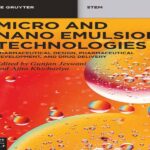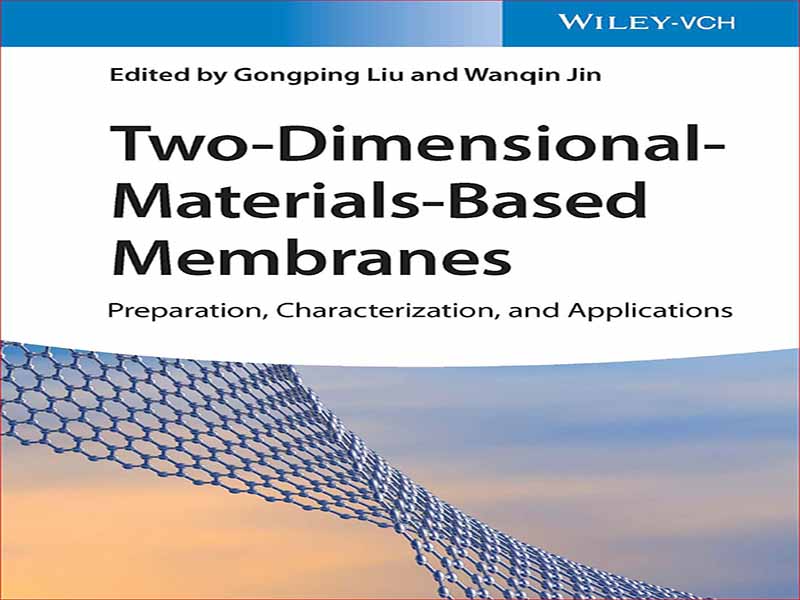- عنوان کتاب: Two-Dimensional-Materials-Based Membranes
- نویسنده: Gongping-Liu,-Wanqin-Jin
- حوزه: شیمی مواد
- سال انتشار: 2022
- تعداد صفحه: 387
- زبان اصلی: انگلیسی
- نوع فایل: pdf
- حجم فایل: 12.5 مگابایت
غشاهای مصنوعی در فرآیندهای مختلفی از تصفیه آب، تصفیه گاز گرفته تا تبدیل انرژی مورد استفاده قرار گرفتهاند. فرآیندهای غشایی مرسوم، از جمله میکروفیلتراسیون، اولترافیلتراسیون و اسمز معکوس، تجاری شده و به طور گسترده در صنایع غذایی، شیمیایی و پزشکی استفاده می شود. با این حال، درک جداسازی دقیق مولکول ها/یون ها با اندازه های زیر نانومتری، مانند آب شور، محلول حلال آلی، و مخلوط های گاز، چالش برانگیز است. همانطور که می دانیم، بین نفوذپذیری و گزینش پذیری برای غشاهای پلیمری یک معامله کلی وجود دارد. اگرچه غشاهای معدنی می توانند هم نفوذپذیری و هم گزینش پذیری بالایی داشته باشند، هزینه بالای ساخت غشا توسعه آنها را محدود می کند. کلید در طراحی و ساخت غشاهای با کارایی بالا (نفوذپذیری، گزینش پذیری و پایداری بالا) برای جداسازی مولکولی کارآمد نهفته است. مواد دوبعدی (2 بعدی) (مانند نانوصفحات مواد خانواده گرافن، زئولیتها، چارچوبهای فلزی-آلی یا هیدروکسیدهای دولایهای) به بلوکهای نانوساختمانی عالی برای توسعه غشاهای جداسازی نسل بعدی با نانو منافذ و/یا نانو کانالهای منحصربهفرد تبدیل شدهاند. اخیراً، غشاهای مبتنی بر مواد دوبعدی به عنوان یک موضوع بسیار داغ هم در مطالعات نظری و هم در مطالعات تجربی ظاهر شدهاند و علاقه زیادی را به خود جلب کردهاند. نتایج جدید مهم نشان داد که غشاهای جذاب مواد دو بعدی خواص نفوذ فوقالعادهای را نشان میدهند و دری را به روی غشاهای فوق سریع و بسیار انتخابی برای تصفیه آب، نمکزدایی، جداسازی گاز و جداسازی زیستی باز میکنند. تا به حال، کتاب ها فاقد دیدگاه آموزنده در مورد موضوع مهم معاصر «غشاهای مواد دو بعدی» بودند. نیاز مبرمی به کتابی وجود دارد که نتایج جدید و اهمیت و چالشهای کنونی در مورد غشاهای دوبعدی را زنده کند. در این کتاب، هدف ما ارائه اطلاعات جامع در مورد طراحی، ساخت و کاربرد غشاهای دو بعدی است که برای جداسازی مولکولی استفاده میشوند.
Synthetic membranes have been used in various processes, from water treatment, gas purification to energy conversion. The conventional membrane processes, including microfiltration, ultrafiltration, and reverse osmosis, have been commercialized and widely used in food, chemical, and medical industries. However, it remains challenging to realize the precise separation of the molecules/ions with subnanometer sizes, such as saline water, organic solvent solution, and gas mixtures. As we know, there is a general trade-off between permeability and selectivity for polymeric membranes. Although inorganic membranes could achieve both high permeability and selectivity, the high cost of membrane fabrication restricts their development. The key lies in the design and fabrication of high-performance (high permeability, selectivity, and stability) membranes for efficient molecular separation. Two-dimensional (2D) materials (e.g. nanosheets of graphene family materials, zeolites, metal–organic frameworks, or layered double hydroxides) have become excellent nanobuilding blocks to develop next-generation separation membranes featuring unique nanopores and/or nanochannels. Recently, 2D materials-based membranes have been appearing as a very hot topic both in theoretical and experimental studies and have attracted a huge surge of interest. Important new results demonstrated that the fascinating 2D-material membranes showed extraordinary permeation properties, opening the door to ultrafast and highly selective membranes for water purification, desalination, gas separation, and bioseparation. Up to now, books lacked an instructive view on the important contemporary topic “2D materials membranes.” There is an urgent need for a book that brings alive the new results, and current significances and challenges concerning 2D-material membranes. In this book, we aim to give comprehensive information on design, fabrication, and application of 2D-material membranes that are used for molecular separation.
این کتاب را میتوانید از لینک زیر بصورت رایگان دانلود کنید:




































نظرات کاربران